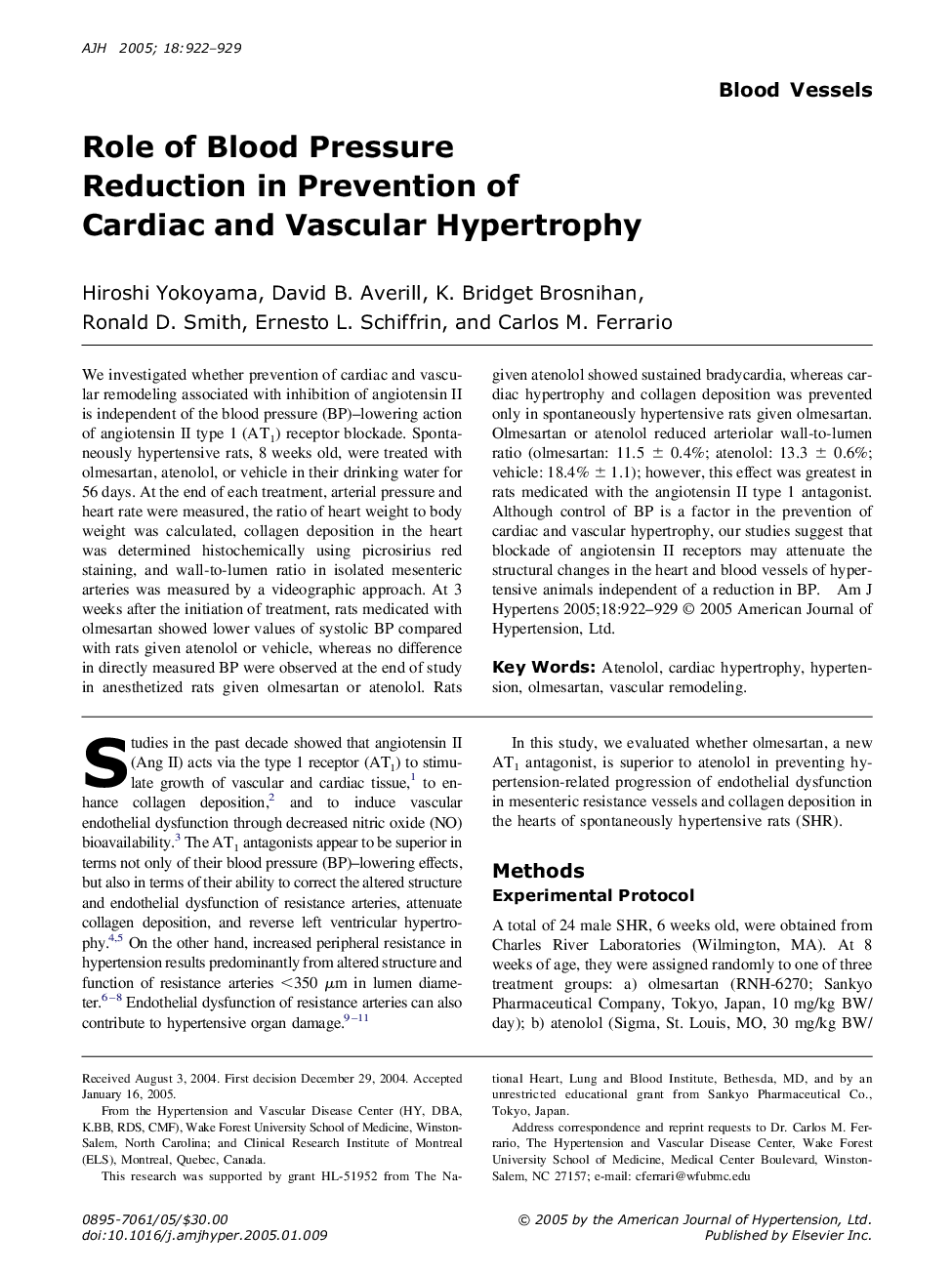| Article ID | Journal | Published Year | Pages | File Type |
|---|---|---|---|---|
| 9940772 | American Journal of Hypertension | 2005 | 8 Pages |
Abstract
We investigated whether prevention of cardiac and vascular remodeling associated with inhibition of angiotensin II is independent of the blood pressure (BP)-lowering action of angiotensin II type 1 (AT1) receptor blockade. Spontaneously hypertensive rats, 8 weeks old, were treated with olmesartan, atenolol, or vehicle in their drinking water for 56 days. At the end of each treatment, arterial pressure and heart rate were measured, the ratio of heart weight to body weight was calculated, collagen deposition in the heart was determined histochemically using picrosirius red staining, and wall-to-lumen ratio in isolated mesenteric arteries was measured by a videographic approach. At 3 weeks after the initiation of treatment, rats medicated with olmesartan showed lower values of systolic BP compared with rats given atenolol or vehicle, whereas no difference in directly measured BP were observed at the end of study in anesthetized rats given olmesartan or atenolol. Rats given atenolol showed sustained bradycardia, whereas cardiac hypertrophy and collagen deposition was prevented only in spontaneously hypertensive rats given olmesartan. Olmesartan or atenolol reduced arteriolar wall-to-lumen ratio (olmesartan: 11.5 ± 0.4%; atenolol: 13.3 ± 0.6%; vehicle: 18.4% ± 1.1); however, this effect was greatest in rats medicated with the angiotensin II type 1 antagonist. Although control of BP is a factor in the prevention of cardiac and vascular hypertrophy, our studies suggest that blockade of angiotensin II receptors may attenuate the structural changes in the heart and blood vessels of hypertensive animals independent of a reduction in BP.
Related Topics
Health Sciences
Medicine and Dentistry
Cardiology and Cardiovascular Medicine
Authors
Hiroshi Yokoyama, David B. Averill, K. Bridget Brosnihan, Ronald D. Smith, Ernesto L. Schiffrin, Carlos M. Ferrario,
